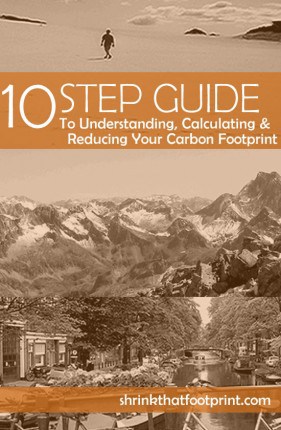
Introduction
Welcome to our 10 Step Plan for reducing carbon footprint!
We’ve called this a guide, but it’s more like a book. There are over 40,000 words and over 60 images here. But don’t worry, it’s built to be a scan-able. Simply go to the navigation links below and click to what takes your interest.
Navigation Menu for the 10 Step Plan for Reducing Carbon Footprint
1: What is a carbon footprint?
2: What is climate change?
3: Carbon targets for your footprint
4: Calculate your carbon footprint
5: Shrink your housing footprint
6: Shrink your travel footprint
7: Shrink your food footprint
8: Shrink your product footprint
9: Shrink your service footprint
10: Take further climate action
Explanation
This plan for reducing carbon footprint is divided into ten simple steps.
Steps one to three are about understanding carbon footprints. This will be explained in the context of climate change, and that the footprint itself becomes a measurable target that will guide decisions.
Step four is calculations. After we find out the way to measure our carbon foodprint, we apply it to our lives and find out the amount we’re emitting. On average this is 4-5 tons of carbon per person per year.
Step five to nine focus on reducing housing, travel, food, product and service footprints. These are major components of the carbon foodprint. A plan to reduce carbon footprint will focus on each of these.
Step ten talks about taking further climate action. Steps one to nine of focuses on the individual. We have greater impact on others through direct action. Step ten takes the effort into a new direction.
Lindsay Wilson
I founded Shrink That Footprint in November 2012, after a long period of research. For many years I have calculated, studied and worked with carbon footprints, and Shrink That Footprint is that interest come to life.
I have an Economics degree from UCL, have previously worked as an energy efficiency analyst at BNEF and continue to work as a strategy consultant at Maneas. I have consulted to numerous clients in energy and finance, as well as the World Economic Forum.
When I’m not crunching carbon footprints you’ll often find me helping my two year old son tend to the tomatoes, salad and peppers growing in our upcycled greenhouse.
